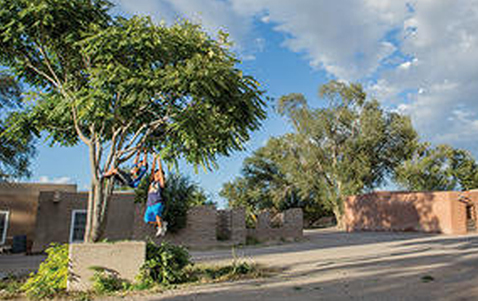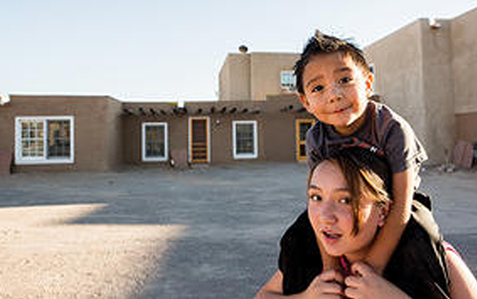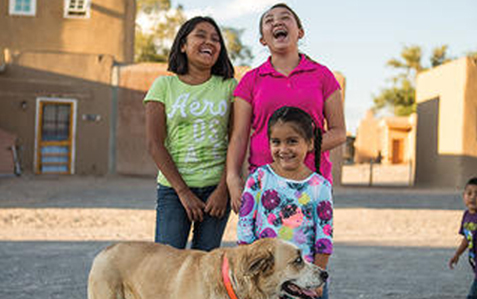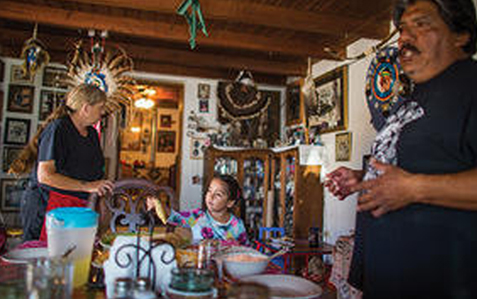It Takes a Village: The Story of Ohkay Owingeh

The Native American pueblo of Ohkay Owingeh in New Mexico unites to save ancient dwellings that help form the foundation of its cultural traditions.
- Owe’neh Bupingeh is the same color as the arid New Mexico land that surrounds it. But then, it was created out of that earth. The historic, 25-acre village’s flat-roofed homes and ceremonial kivas have been fashioned out of adobe mixed from the local soil for so many generations that its origins disappear into the past. It is at least 700 years old, existing more than three centuries before the Mayflower arrived on American shores.
- The earliest photographs of the village, taken in 1877, show a place still recognizable today. The one- and two-story buildings surround four unpaved plazas used for dances and feast days that regularly attract crowds of visitors. Owe’neh Bupingeh, listed on the National Register of Historic Places, isn’t a museum piece; it’s a living village. It serves as the historic core and spiritual center of Ohkay Owingeh, one of 19 federally recognized pueblos, or tribal communities, in New Mexico.
- A decade ago, however, it looked as if Owe’neh Bupingeh might return to the earth from which it came. The number of inhabited homes had fallen to about 25, from a peak of roughly 200. Visiting families stayed in some of the other residences during ceremonies, for which tribal members return from all over. Many, though, had been abandoned or had slipped into such disrepair that they were unfit for regular habitation.
- The American Southwest contains many deserted (or nearly deserted) pueblos that only fill with people during tribal gatherings. They remain central to native spiritual practices, but they too often carry the haunted air of halfabandoned ruins. Owe’neh Bupingeh could have followed that path.
- It did not because the tribe decided it would not. And because tribal officials, the New Mexico Historic Preservation Division, the U.S. Department of Housing and Urban Development (HUD), and other parties embraced a project that stretched the established strictures of architectural preservation, while embodying the truest sense of the philosophy behind it.









